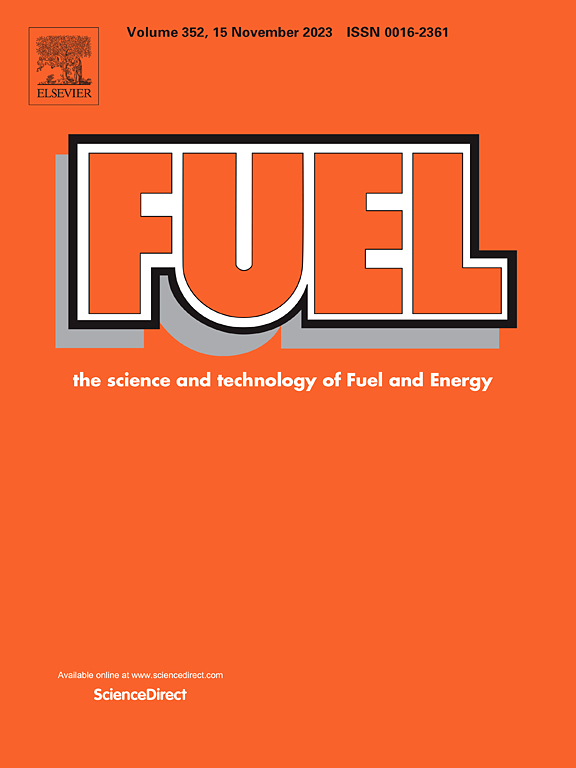燃料和安全应用用极端闪点行为指示器预测二元混相混合物闪点行为的评价标准
IF 6.7
1区 工程技术
Q2 ENERGY & FUELS
引用次数: 0
摘要
可燃混合物的闪点(FP)行为在使用这些材料的各个部门至关重要,特别是在这种混合物中观察到极端的FP行为(最大或最小FP行为:MaxFPB或MinFPB)时。因此,了解二元混合物的FP行为,作为复杂混合物的最简单组成部分,对于提高储存、运输或处理可燃材料的工业安全性以及燃料设计至关重要。本研究的重点是验证预测二元溶液中FP行为的标准,正如之前的研究中提出的那样,利用极限闪点行为指标(EFPBIs)。利用已有的226个二元混相的FP实验数据对该标准进行了验证。结果表明,EFPBIs能够准确预测二元可燃混合物的FP行为。在验证过程中,发现可以将展示MaxFPB/MinFPB的充分条件修改为充分必要条件;此外,根据观察到的226种混相混合物的FP行为,也可以将不表现出极端FP行为的必要条件修改为充分必要条件。该方法不仅有助于快速和经济有效地预测未知二元可燃混合物中的FP行为,而且在减轻与处理易燃物质相关的危害方面起着至关重要的作用。在226个验证的混合物中,33个是甲基/乙基/丙基/丁基/异戊酯与醇/烷烃的组合,40个是酯对酯的混合物。这些混合物是生物燃料设计的基础,本研究中的方法可以支持这一应用。本文章由计算机程序翻译,如有差异,请以英文原文为准。
Evaluation criteria for predicting flash point behavior of binary miscible mixtures using extreme flash point behavior indicators for fuel and safety applications
Flash point (FP) behavior of ignitable mixtures is critical in various sectors that utilize these materials, particularly when extreme FP behavior (Maximum or Minimum FP Behavior: MaxFPB or MinFPB) is observed in such mixtures. Therefore, understanding the FP behavior of binary mixtures, as the simplest building blocks of complex mixtures, is essential for enhancing safety in industry that store, transport, or process ignitable materials, as well as in fuel design. This study focuses on validating of the criteria for predicting FP behavior in binary solutions, as proposed in previous studies, utilizing Extreme Flash Point Behavior Indicators (EFPBIs). The validation of the criteria was performed using experimental FP data of 226 binary miscible mixtures reported in prior studies. The results demonstrate that EFPBIs can accurately predict the FP behavior of binary flammable mixtures. In this validation process, it was found that the sufficient condition for exhibiting MaxFPB/MinFPB can be modified to necessary and sufficient condition; moreover, the necessary condition not to show extreme FP behavior can also be modified to a necessary and sufficient condition based on the observed FP behaviors of 226 miscible mixtures. This method not only facilitates the swift and cost-effective prediction of FP behavior in unknown binary ignitable mixtures but also plays a crucial role in mitigating hazards associated with handling of flammable substances. Among the 226 validated blends, 33 were combinations of methyl/ethyl/propyl/butyl/isoamyl esters with alcohols/alkanes, and 40 were ester-to-ester mixtures. These blends are fundamental in biofuel design, and the approach in this study can support this application.
求助全文
通过发布文献求助,成功后即可免费获取论文全文。
去求助
来源期刊

Fuel
工程技术-工程:化工
CiteScore
12.80
自引率
20.30%
发文量
3506
审稿时长
64 days
期刊介绍:
The exploration of energy sources remains a critical matter of study. For the past nine decades, fuel has consistently held the forefront in primary research efforts within the field of energy science. This area of investigation encompasses a wide range of subjects, with a particular emphasis on emerging concerns like environmental factors and pollution.
 求助内容:
求助内容: 应助结果提醒方式:
应助结果提醒方式:


